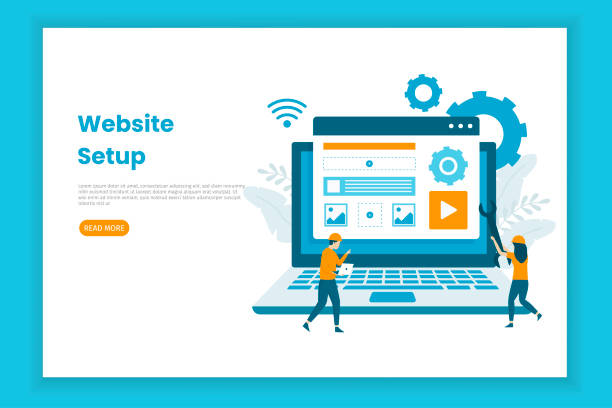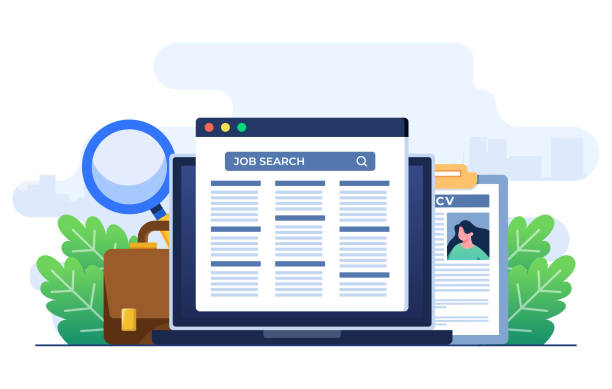An Introduction to User-Friendly Website Design and Its Importance

In today’s digital world, merely having a website is not enough; what truly matters is the quality of the user experience your site offers to visitors.
#UserFriendlyWebsiteDesign is no longer a luxury option, but a strategic necessity for any online business.
A user-friendly site is one where visitors can easily find the information they need, interact with different sections of the site, and complete their tasks without any confusion.
This not only increases user satisfaction but also directly impacts conversion rates, time spent on the site, and ultimately, your business success.
Poor and non-user-friendly web design can quickly lead visitors to abandon your site and turn to your competitors.
Therefore, investing in this aspect of your website is a smart decision for any business seeking growth and sustainability in the online space.
This section provides an overview and explanation of the importance and concept of this approach in web design.
User-friendly website design means focusing on user needs and behaviors at every stage of website development.
Does your company website create a professional and lasting first impression on potential customers? RasawWeb, with professional corporate website design, not only reflects your brand’s credibility but also paves a path for your business growth.
✅ Build a powerful and reliable brand image
✅ Attract target customers and increase sales
⚡ Get free consultation
Key Principles of User-Friendly Website Design
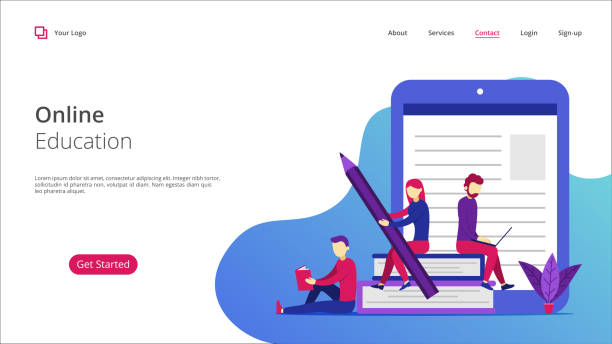
To create a truly #UserFriendlyWebsite, a set of principles and rules must be observed.
These principles help users achieve their goals with minimum effort and have a pleasant experience on the site.
The first principle is “Ease of Navigation.”
Clear menus, logical page structure, and appropriate internal links are key components of easy navigation.
Users should be able to access any part of the site they need without much thought.
The second principle is “Consistency and Integration”; meaning that design elements, colors, fonts, and content style should be harmonious across all pages of the site.
This consistency makes the user feel familiar and comfortable.
“Appropriate Feedback” is also of high importance; users should receive clear feedback after every action they perform (such as clicking a button or submitting a form).
“Accessibility” for all users, including those with disabilities, is a vital principle.
This includes using alternative text for images, appropriate color contrast, and keyboard navigability.
Adhering to these principles in the user-friendly website design process follows an educational and guidance-oriented approach to ensure that your website is not only beautiful but also usable for everyone.
User Interface (UI) and User Experience (UX) in Web Design

Often, the concepts of User Interface (UI) and User Experience (UX) are used interchangeably, but in reality, they are complementary.
#UI (User Interface) refers to the visual and interactive aspects of a website or application; that is, everything the user sees and interacts with, from buttons and icons to layout and color schemes.
In contrast, #UX (User Experience) is a broader concept that addresses all the user’s feelings and experiences when using a product.
This includes ease of use, efficiency, satisfaction, and even emotional feelings of the user.
An excellent user-friendly website design is the result of a unique synergy between UI and UX.
A beautiful UI without functional UX is meaningless, and vice versa.
Specialists in this field work expertly on both dimensions to ensure that the website is not only aesthetically pleasing but also easy to use and meets user needs.
The differences and overlaps of these two concepts can be seen in the table below:
| Feature | User Interface (UI) | User Experience (UX) |
|---|---|---|
| Definition | Product’s appearance and interactive feel | All user interaction with the product |
| Focus on | Appearance, layout, visual elements | Feelings, efficiency, user satisfaction |
| Main Question | How does it look? | How does it feel? |
| Example | Button colors, font, icons | Ease of filling a form, loading speed |
The Role of Content in Optimal User Experience

Content is king, and this statement fully applies to #UserFriendlyWebsiteDesign.
High-quality and structured content not only provides the necessary information to the user but also significantly enhances their experience on the site.
Website content should be clear, concise, and useful, and utilize appropriate keywords to improve #SEO.
Organizing content into headings, short paragraphs, lists, and relevant images increases readability and helps users quickly find the information they desire.
Using simple and understandable language, free from complex technical jargon, ensures that all users can comprehend your message.
Furthermore, interactive content such as surveys, videos, and image galleries can make the user experience more engaging and attractive.
This analytical approach to content demonstrates how every word and image on your site plays a crucial role in shaping the user’s perception and feelings towards your brand.
User-friendly website design would be incomplete without strategic and optimized content.
Does your current site display your brand’s credibility as it should? Or does it drive away potential customers?
RasawWeb, with years of experience in professional corporate website design, is your comprehensive solution.
✅ A modern, beautiful site tailored to your brand identity
✅ Significant increase in lead generation and new customer acquisition
⚡ Contact RasawWeb now for a free corporate website design consultation!
Website Loading Speed and Its Impact on User-Friendliness
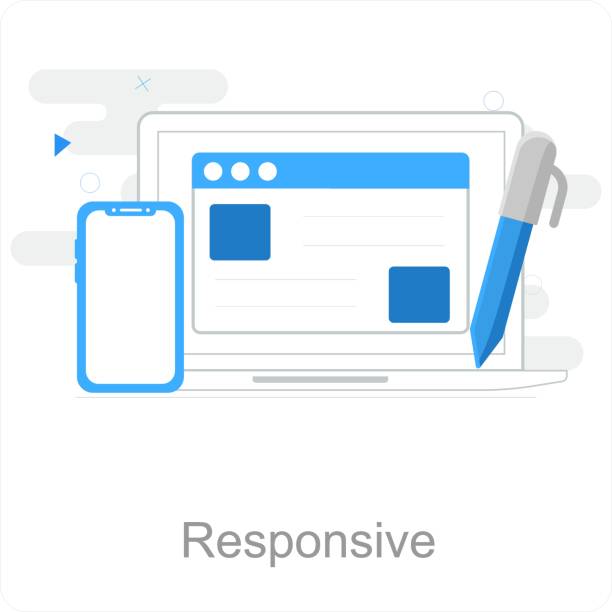
One of the most important factors in #UserFriendlyWebsiteDesign and user retention is website loading speed.
Studies have shown that even a few seconds delay in page loading can lead to a significant percentage of users abandoning the site.
Today’s users are more impatient than ever and expect websites to load quickly.
Slow speed not only harms the user experience but also negatively impacts the site’s ranking in search engines like Google.
To improve loading speed, various methods can be used: image optimization (reducing size without losing quality), file compression (CSS, JavaScript, HTML), using Content Delivery Networks (CDNs), and choosing a powerful and reliable host.
Additionally, optimized coding and removing unnecessary and redundant code play a key role in this area.
This is a practical guide showing how implementing these changes can increase user satisfaction and ensure your site leads the digital competition.
Website speed measurement tools like Google PageSpeed Insights can help you identify problems and provide solutions.
Improving loading speed is one of the vital aspects of user-friendly website design.
Responsive Design for All Devices
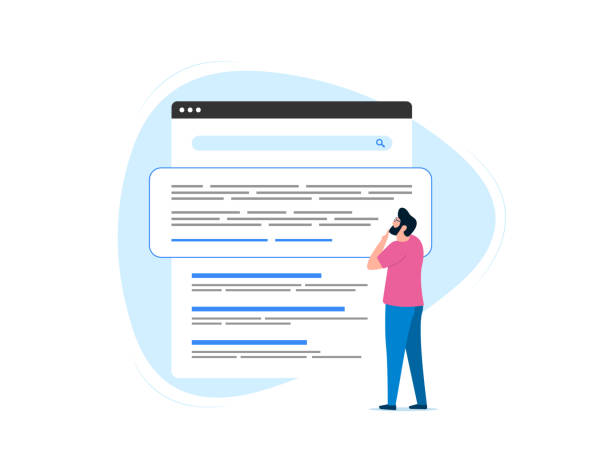
With the ever-increasing use of smartphones and tablets for web browsing, #ResponsiveDesign has become a cornerstone for #UserFriendlyWebsiteDesign.
#ResponsiveDesign means that your website is able to automatically adjust its layout and elements to the size of the user’s device screen.
This ensures that users, whether they visit your site with a large desktop computer, a laptop, a tablet, or a smartphone, have an optimized experience without the need for zooming or horizontal scrolling.
Failure to implement responsive design can severely harm the user experience and lead to a significant loss of traffic from mobile devices.
Search engines also prioritize sites with responsive design, as this type of design indicates an advanced and user-centric approach.
Therefore, ensuring that your website is optimized for every device is of paramount importance and an inseparable part of a successful website design strategy.
This is a comprehensive explanation of the importance and functionality of responsive design in today’s web world.
User-friendly website design, without considering this principle, cannot meet the needs of modern users.
Testability and User Feedback in Design Improvement

After implementing the principles of #UserFriendlyWebsiteDesign, the next critical step is testing and gathering feedback from real users.
#Testability is a process during which your site’s performance is examined under various conditions and by different users to identify its strengths and weaknesses.
There are various methods for this, including A/B testing, where two different versions of a page or element are shown to users to determine the best performance.
Online surveys, focus groups, and analysis of user behavioral data through tools like Google Analytics also provide valuable information.
Direct user feedback, especially regarding issues that lead to confusion or frustration, is of great importance.
This information helps you continuously improve your design and ensure that your site always meets user needs.
This informative and guidance-oriented approach emphasizes the importance of listening to the user’s voice and translating it into actions for continuous improvement.
| Testing Method | Description | Advantages |
|---|---|---|
| A/B Testing | Comparing two versions of a page or element to determine better performance | Accurate quantitative results, targeted optimization |
| User Interviews | Direct conversations with users to deeply understand needs and problems | Deep qualitative insights, discovery of hidden problems |
| Heatmaps | Visual representation of user behavior (clicks, scrolls) on pages | Identification of attractive spots and overlooked sections |
| Surveys | Collecting large-scale feedback through questionnaires | Quantitative data, trend identification |
Security and Privacy as Part of User-Friendly Design

In the digital age, #security and #data_privacy have become as important as aesthetics and functionality in #UserFriendlyWebsiteDesign.
Users are increasingly concerned about their personal information and expect the websites they visit to protect their data.
Using the HTTPS protocol (indicating a secure connection) is the first essential step.
This protocol encrypts data exchanged between the user’s browser and the website server, preventing unauthorized access.
Furthermore, clear and transparent policies regarding the collection, use, and storage of user information build user trust.
The website must clearly explain how cookies and personal information are used and provide options for users to control their privacy.
Adherence to security standards and data protection regulations (such as GDPR in Europe) is not only a legal requirement but also a key element in building a positive and trustworthy user experience.
This specialized approach demonstrates how security is a foundation for true user-friendly design, and users only feel comfortable when they know their information is safe.
Are you bothered by losing customers who visited your site to make a purchase?
RasawWeb is your specialized solution for having a successful online store.
✅ Significantly increase your online sales
✅ Build trust and professional branding among customers⚡ Get free consultation from RasawWeb specialists!
The Future of User-Friendly Website Design: Trends and Predictions
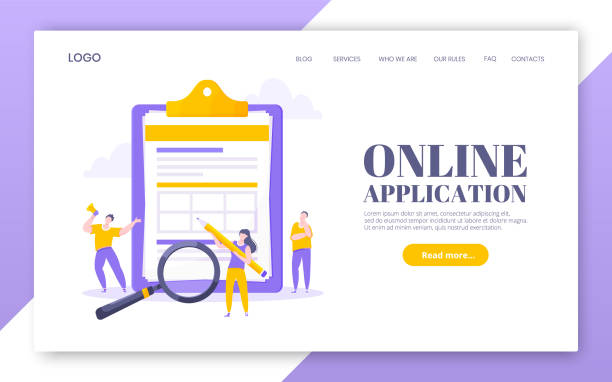
The world of web design is constantly evolving, and #UserFriendlyWebsiteDesign is no exception.
The future of this field is full of new trends and technologies that will elevate the user experience to a higher level.
One of the most important trends is #ArtificialIntelligence and machine learning in personalizing the user experience.
Websites will be able to provide highly relevant and personalized content and recommendations based on users’ past behavior.
Voice User Interfaces (Voice UI) are also growing and can offer a new way for users to interact with websites, especially with the proliferation of voice assistants.
Augmented Reality (AR) and Virtual Reality (VR) also hold great potential for creating deeper visual and interactive experiences, particularly in online stores and educational platforms.
Minimalist design and a focus on content will also remain popular.
The question that arises is how these technologies can be integrated in a way that simplifies, rather than complicates, the user experience? This is a thought-provoking and engaging content piece that addresses the future outlook of web design and helps designers prepare for future challenges and opportunities.
How to Create a Lasting User-Friendly Website Design?
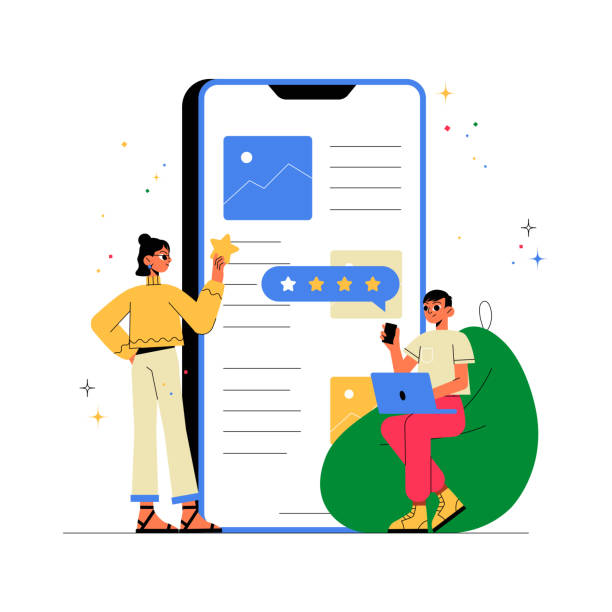
Creating a #UserFriendlyWebsiteDesign that lasts over time requires a continuous and dynamic approach.
Websites are living entities and must be constantly updated to match changing user needs, new technologies, and design trends.
The first step is continuous analysis of user data.
Examining web analytics tools shows you how users interact with your site, where they encounter problems, and which sections are more popular.
Regular feedback collection through surveys and usability tests is also crucial.
Secondly, you must always stay informed about the latest design trends and technologies.
What is user-friendly today may become obsolete tomorrow.
Flexibility in design and the ability to adapt quickly to changes are important principles of sustainability.
Finally, “User-Centered Design” must be embedded in your team’s DNA.
Every decision, from color selection to information structure, should begin with the question: “How will this affect the user experience?” This analytical and guidance-oriented approach ensures that your site is not only user-friendly now but will also be able to provide an exceptional experience in the future.
This approach is essential for a lasting user-friendly website design.
Frequently Asked Questions
And other services of Rasa Web Advertising Agency in the field of advertising
Smart Digital Advertising: A creative platform to improve click-through rates with intelligent data analysis.
Smart Website Development: A fast and efficient solution for increasing sales with a focus on custom programming.
Smart Marketing Automation: A fast and efficient solution for user engagement with a focus on SEO-driven content strategy.
Smart Link Building: A dedicated service for digital branding growth based on key page optimization.
Smart Data Analysis: A dedicated service for increasing website traffic growth based on the use of real data.
And over a hundred other services in the field of internet advertising, advertising consultation, and organizational solutions
Internet Advertising | Advertising Strategy | Advertorials
References
The Importance of User-Friendly Website Design
How to Design a Professional Website?
Strategies for Optimizing User Experience (UX)
Principles of UI Design for Websites
? Ready to transform your business in the digital world? RasawWeb Afarin, with expertise in secure website design, professional SEO, and content marketing, paves the way for your success and visibility. With us, secure the future of your online business.
📍 Tehran, Mirdamad Street, next to Bank Markazi, Southern Kazeroon Alley, Ramin Alley, No. 6

